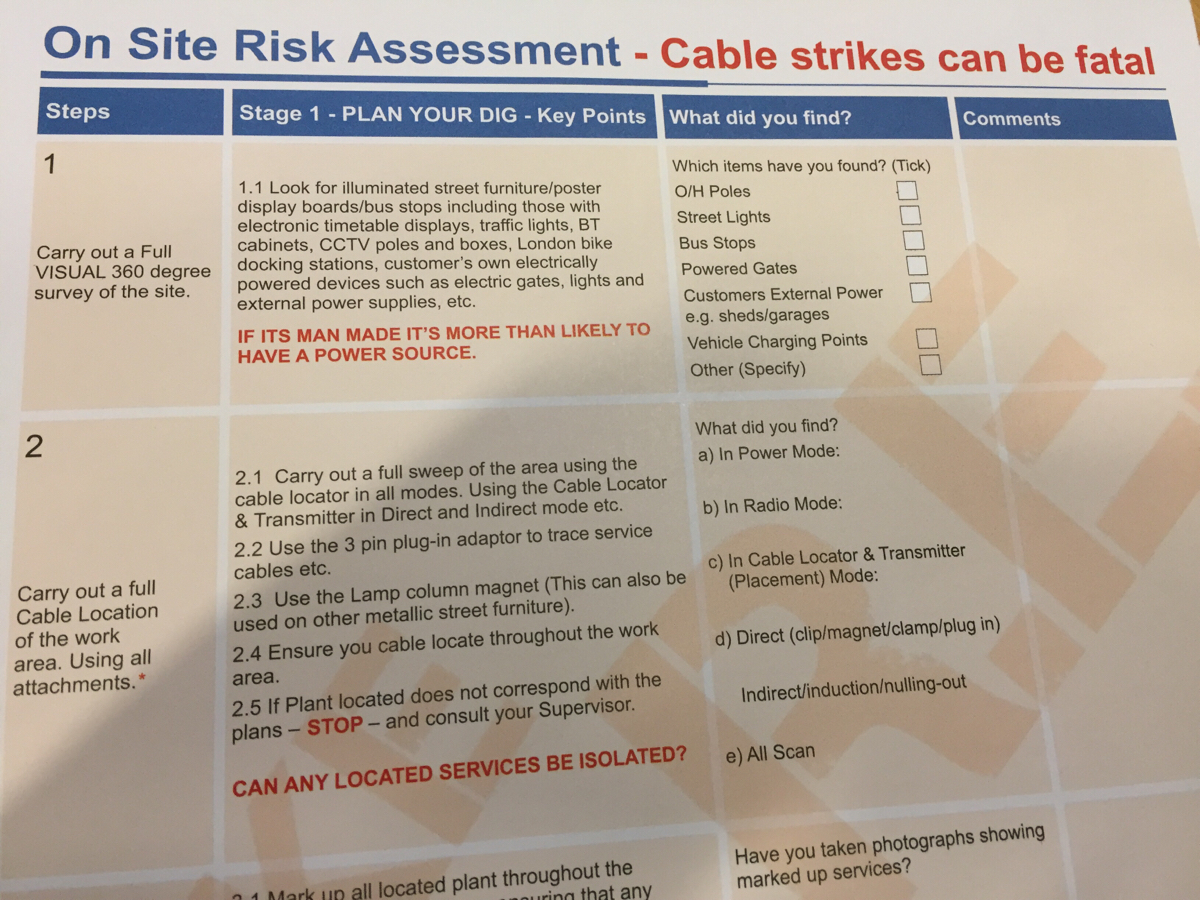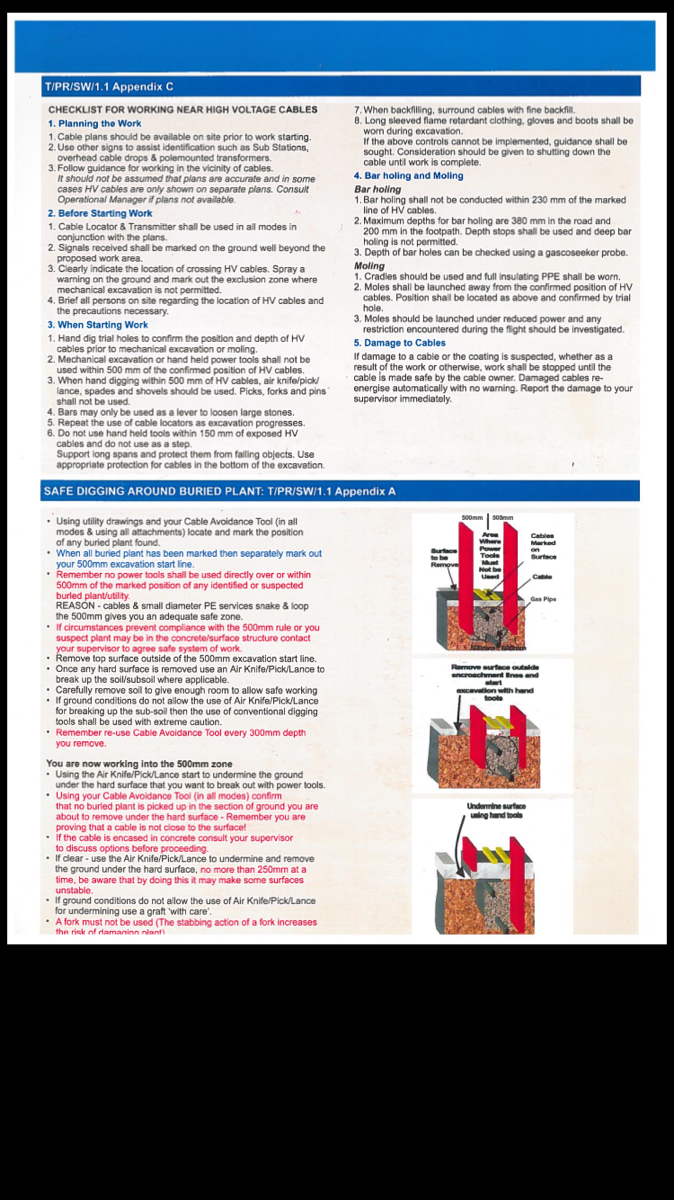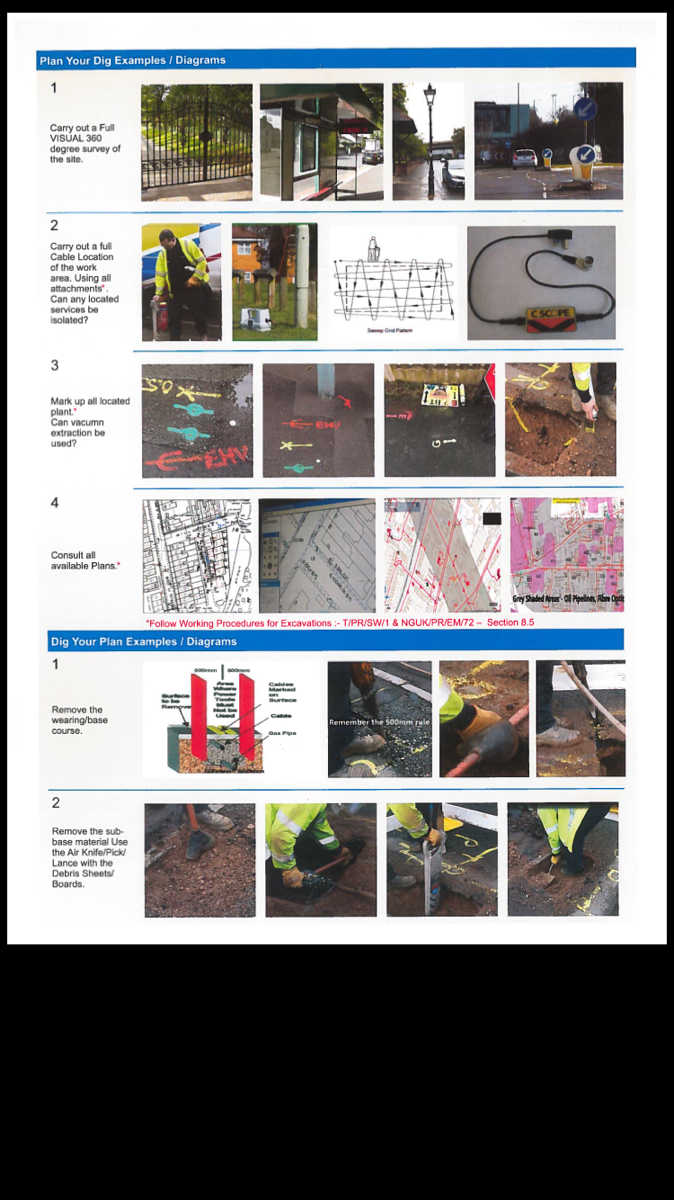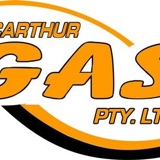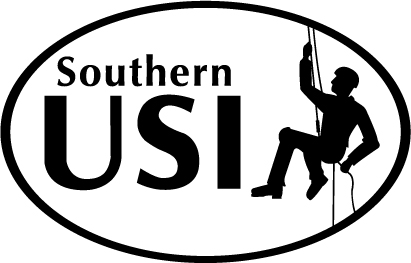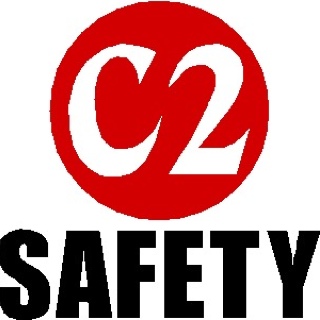Title Page
-
On Site Risk Assessment
-
Conducted on
-
Location
Step 1 Carry out a full visual 360 degree survey of the site 1.1 Look for illuminated street furniture/ poster display boards/ bus stop including those with electronic timetable displays, traffic lights, BT cabinets, CCTV poles and boxes, London bike docking stations, customer's own electrically powered devices such as electric gates, lights and external power supplies, etc. If it's man made its more than likely to have a power source.
-
Which items have you found
- O/H poles
- Street Lights
- Bus stops
- Powered Gates
- Customers external power e.g sheds/ garages
- Vehicle charging points
- Others
-
Comments
Step 2 Carry out a full Cable Location of the work area. Using all attachments. 2.1 Carry out a full sweep of the area using the cable locator in all modes. Using the cable locator & transmitter in direct and indirect mode etc. 2.2 Use 3 pin plug-in adaptor to trace service cables etc. 2.3 Use the Lamp column magnet (This can also be used on other metallic street furniture). 2.4 Ensure you cable locate throughout the work area. 2.5 if plant located does not correspond with the plans - STOP- and consult your supervisor. CAN ANY LOCATED SERVICES BE ISOLATED?
-
What did you find in power mode
-
What did you find in radio mode
-
What did you find In cable locator and transmitter (placement) mode
-
What did you find in direct (clip/magnet/clamp/plug in) indirect/induction/nulling-out
-
What did you find in all scan
-
Comments
Step 3 Mark up all located plant 3.1 Mark up all located plant throughout the excavation/ bar hole area, ensuring that any markings will not be covered/ remove once excavation starts. 3.2 Mark up the safe dig area maintaining the 500mm & 230mm rule. This is your safe dig area. 3.3 If the 500mm or 230mm rule can not be achieved - STOP - consult your supervisor to agree a safe way forward. The agreed safe system of work shall be noted in stage 3.
-
Photographs showing marked up services
-
Comments
Step 4 Consult all available plans. 4.1 Check all GAS plans for main location/ pressure etc. 4.2 Check all cable plans. 4.3 Where High Voltage (HV) cables are known or suspected to be present use the checklist supplied. 4.4 When moling use pre moling checklist T/PR/SL/1 Apendix J. 4.5 For planned works you shall consult other utility drawing, e.g telecom water. DRAWINGS ONLY PROVIDE INDICATIVE POSITIONS OF BURIED APPARATUS.
-
Gas: diameter in path
- 32mm
- 63mm
- 90mm
- 125mm
- 150mm
- 180mm
- 2"
- 3"
- 4"
- 6"
- 8"
- 10"
- 12"
- 18"
-
Gas: pressure in path
-
Gas: diameter in road
- 32mm
- 63mm
- 90mm
- 125mm
- 150mm
- 180mm
- 2"
- 3"
- 4"
- 6"
- 8"
- 10"
- 12"
- 18"
-
Gas: pressure in road
-
Gas: diameter in verge
- 32mm
- 63mm
- 90mm
- 125mm
- 150mm
- 180mm
- 2"
- 3"
- 4"
- 6"
- 8"
- 10"
- 12"
- 18"
-
Gas: pressure in verge
-
Gas: diameter in private
- 32mm
- 63mm
- 90mm
- 125mm
- 150mm
- 180mm
- 2"
- 3"
- 4"
- 6"
- 8"
- 10"
- 12"
- 18"
-
Gas: pressure in private
-
Electric
-
Config
-
Where
-
Have service cables been found
-
Substation nearby
-
Other
- Water
- Telecom
- Oil
- CCTV
- Chemical
-
Comments
-
-
Step 1 Remove the wearing/ base course. T/PR/SW1.1 Appendix A e.g Asphalt, Tarmac, block pavement,Grass etc. 1.1 Use the SAFE DIGGING AROUND BURIED PLANT process. 1.2 Remove wearing course outside of the 500mm excavation start line - Remember if the 500mm or 230mm rule could not be achieved follow the agreed safe system of work agreed with your supervisor and noted in stage 3 below. 1.3 Remember no power tools shall be used directly over or within 500mm of the marked position of any identified or suspected buried plant/ utility unless the cable /plant has already been exposed by digging under the surface to be broken out.
-
Do you need to dig within 500mm of a cable?
-
Have you referred to supervisor
-
Time and date
-
Supervisors name
-
Comments box
Removing sub-base. T/PR/SW/1, Section 2.2 & section 8 2.1 once the wearing course has been removed - The air pick shall be first option to loosen the ground. You must try the Air knife/Pick/Lance. If ground conditions do not allow effective operation of the air knife/pick/lance only then should conventional hand digging tools be used with extreme caution. 2.2 Using the air knife/pick/lance break-up and carefully remove the ground in 100mm layers. 2.3 Removing spoil carefully with shovel taking care not to come into contact with plant. 2.4 Keep retesting with cable locator in all modes every 300mm - in the excavation area subject to atmosphere testing. 2.5 Repeat until all plant has been found and all excavation has been completed. 2.6 If plant is suspected or found to be buried in concrete or if you need to encroach the 500mm rule -STOP - consult your supervisor to agree a safe system of work before proceeding e.g seek isolation, redesign route or work method; record in stage 3 below.
-
Is the ground suitable for an air knife/ pick/ lance
-
Is the ground suitable for vacuum extraction
-
Ground suitable after 1st 300mm?
-
Ground suitable for the last 100mm either side of the cable
-
Comments
Stage 3 Remember as the job progresses you need to "stop, take a minute" to think through any new hazards/ risks that you may find during the excavation.
-
If you need to alter your dig plan from stage 1 or agree a "safe system of work" with your supervisor then record it here ( remember to use FaceTime on your iPhone if appropriate):
-
Site sketch
-
Comments box
Signatures
-
Supervisor signature
-
Team mate signature
-
Team mate signature
-
Team leader signature
